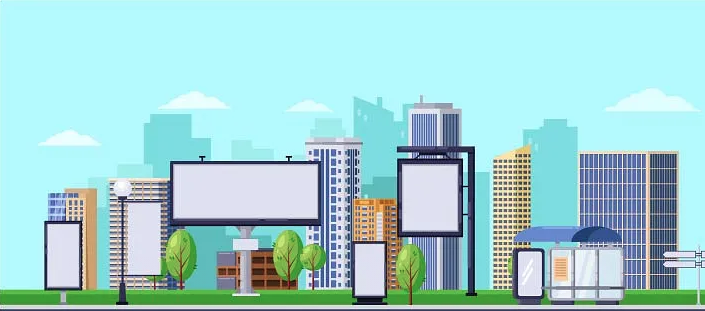Easing DOOH restrictions in Mumbai to make outdoor the must-have media for campaigns

As the Mumbai government considers lifting restrictions on DOOH in the city, industry experts believe the decision will help the DOOH space flourish and instil growth for agencies
Restrictions on DOOH in Mumbai City especially near traffic signals was a challenge for DOOH players to put out Programmatic and Digital OOH campaigns. Programmatic and DOOH not only creates an attractive touchpoint for brands to reach out to their consumers but it also helps them garner data. ROI in real-time is what brands would achieve through DOOH advertisements. A brand would know how many consumers the messaging has reached out to in real-time, their preferences and habits. Another plus point for Programmatic through Data garnered would be integrating it with the consumer’s mobile phones. With this, a brand can curate personalized DOOH ads as and when the consumer passes by.
The newly appointed government in Mumbai is in talks to lift the restrictions on DOOH in the city. They plan to allow Digital OOH all over the city. However, hopefully, this time they come to a final verdict. Previously, the conversation to allow DOOH happened in January 2018 where Brihanmumbai Municipal Corporation’s (BMC) decision was to press ahead with the plan to permit digital OOH media installations. Then again MCGM (Municipal Corporation of Greater Mumbai) in November was bullish on DOOH but clarity from the traffic department was blocking the pathway.
Jayesh Yagnik, CEO, MOMS Outdoor Media Solutions Private Limited, says that the growth opportunities for agencies are tremendous if Digital OOH is implemented at a large scale. Commenting on this new plan Yagnik says, “This will lead to integration with digital media and all the possible technology-led integrations that one can think of. This will increase the importance of OOH from being an additional media to being a must-have media for all brand campaigns which will eventually result in the growth of top lines and bottom lines for the agencies. We all have seen how successful this has been implemented internationally and if implemented in the right manner this could be the game-changer for the oldest medium of advertising which is OOH.”
Speaking about the challenges that will follow the lift on the DOOH restrictions Yagnik stated, “Implementing DOOH in public areas in an unplanned city like Mumbai has its own set of challenges that has to be taken in account. Problems range from weather conditions, media setup, traffic to theft, security as well as media damage. Although seemingly very, small these issues need to be addressed before the OOH media owners consider DOOH as a viable option for investment in a big way.”
This new plan will strike off the challenge of restrictions for DOOH players and increase inventory for OOH agencies. According to Deepak Kumar, EVP, Ambient, the decision is a welcome decision and it will definitely alter the DOOH landscape largely restricted to ambient locations. He added, “We will soon see the spurt of DOOH screens popping up at important congregation points not just limited to malls, etc. Government and media owners should restrain themselves from putting screens all over the city, overpopulating would create an eyesore. Media owners will have to be selective in screens that they own unless in their quest to be the largest network they might end up overexposing themselves in the market.”
With this new opportunity, the right number of screens at important locations would enable advertisers to go truly hyperlocal and make advertising more relevant to the TG in the given environment. “More media owners and importantly, new age media owners will bring in technology to ensure seamless exposure of advertising to consumers. API led campaigns would become far more relevant and cover larger geographies”, shared Kumar.
The main challenge for OOH agencies is to convince their clients how DOOH will provide them with ROI and will help them garner how much media spends is profiting them in a particular area.
Kumar remarked, “More media owners in the market would increase competition and would help bring in buying efficiencies. The pricing would level out. Buying would not necessarily be limited to the type of screen but its relevance to the brand. ROI would improve as brands would have more screen time and more options available to them. Planners/buyers would have a much larger canvas to play on.”
Lastly, Dipankar Sanyal, CEO, Platinum Communications is of the opinion that if the DOOH proposal which is awaiting some permissions from the traffic department gets through, it will be a game-changer.
“Mumbai is the largest outdoor market and 35-40% of a client’s budget is taken by Mumbai. With the changing face of infrastructure in Mumbai and new laws as proposed, there will be space restriction, hence the number of large static billboards will reduce. Then the entry of DOOH will play a dual role. One will beautify the city and secondly, there will be an ample supply of media space. Unlike static billboards which are one billboard for one client, DOOH will cater to multiple clients. This will increase supply and also bring down rates. The upside to this is more and more clients will be coming on outdoors. As VR and AR get more mainstream DOOH will become more attractive. There is already enough learning from the digital world on various measurement parameters that can be readily taken and thereby provide ROI for every campaign. Of course, programmatic buying will be the order of the day and thereby have a more focussed outdoor campaign with little wastage. All in all, it will be a win-win situation for all stakeholders and Mumbai will retain its numero uno position”, signed off Sanyal.
The final verdict is yet to be announced. We will have to wait and see how this will help scale the growth of DOOH in Mumbai. However, with the excess of DOOH campaigns the challenge to de-clutter and stand out will become potent.
Source: Noel Dsouza

